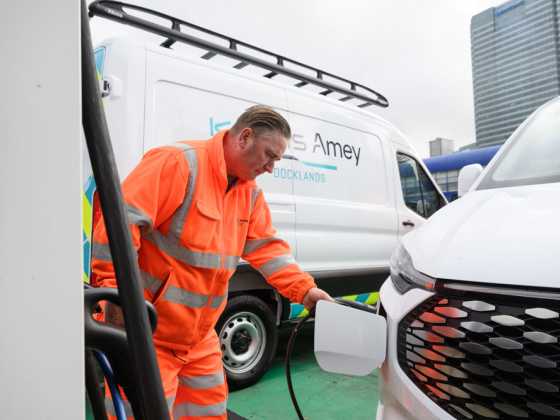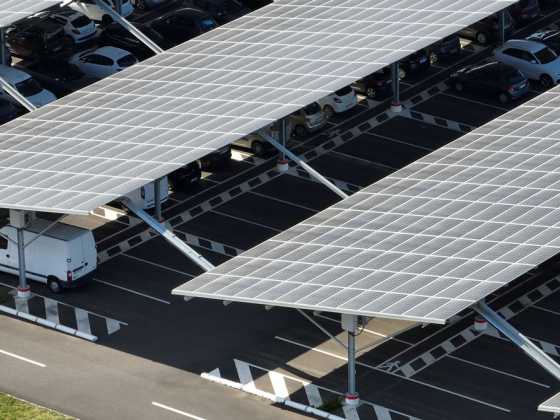Progressing the conversation about alternative fuels

GreenFleet’s latest roundtable, which took place on 5 July at St James’ Park in Newcastle, tackled the subject of alternative fuels and how they can help the heavy goods and specialist fleet sector to reduce emissions, both immediately and in the long term
There is little doubt that fleets are embracing a low carbon future; however there are many challenges remaining, particularly in the specialist, medium and heavy goods sectors.
GreenFleet once again turned its attention to the important role that alternative fuels can play both immediately and in the long term. The most recent roundtable, hosted at St James’ Park, Newcastle, was attended by public sector and blue light fleets from across the Northeast, who were all keen to understand how alternative fuels can aid the transition to a zero emission fleet.
The findings were extremely encouraging. Sponsors for the day, Shell, presented on their latest drop-in fuel that is suitable for all diesel vehicles with an average CO2 emission reduction of 43 per cent* illustrating the important role of alternative fuels in the short to medium term.
It is well publicised that the UK Government is aiming to phase out new petrol and diesel vehicles from 2030. For typical car and van fleets there are many battery electric vehicles that will comfortably replace ICE vehicles. However, there are many fleets operating larger, and frequently specialist, vehicles that do not currently have low or zero emission equivalents. And where there is a suitable alternative vehicle, the cost is frequently prohibitive, even on a total cost of ownership basis. This dilemma has led many fleets to short term paralysis waiting for larger electric vehicles, or hydrogen solutions to materialise. However, as net zero targets move even closer alternatives to diesel offer some real benefits.
A new breed of drop-in fuels
Hayley Arckless, commercial manager at Shell gave an overview of GTL Fuel – a drop-in solution that blends GTL (Gas to Liquid) and HVO. Whilst the overall CO2 emission savings are lower than HVO alone, the air quality improvements remain as good as pure HVO – with the key advantages of a lower price and wider availability. Why blend HVO? Whilst HVO (Hydrotreated Vegetable Oil) offers tangible benefits, there are issues around the wider environmental impacts of using an important food source for fuel; and a high price is also a factor. Redcar and Cleveland Borough Council are already using HVO in their street sweepers; they reported paying a 10-15p premium over diesel, although it was too early to assess the full benefits.
Our fleets were keen to understand the benefits and how this is measured. As a “drop-in” fuel the GTL Fuel blend can be used in any diesel vehicle and no modifications are required. It is even possible to mix and match with diesel depending on availability and cost. The blend is 55 per cent GTL and 45 per cent HVO, with an average 43 per cent* reduction in carbon emissions and up to a 37 per cent reduction in NOx. The reduction in tail pipe emissions was particularly relevant for fleets with vehicles that spend a lot of time idling with employees working at the back of the vehicle (ie refuse trucks, street sweepers, fire appliances, ambulances).
Dave Gillam, Tyne & Wear Fire and Rescue was interested in the impact on maintenance costs; because GTL/HVO moves more cleanly through the engine, fleets have reported up to 25 per cent reduction in Ad Blue and longer life for particulate filters). GTL/HVO also stores for longer than a diesel equivalent (5+ years), although existing diesel storage tanks should be flushed before they are restocked with GTL.
As with all solutions It is not plain sailing; Owen Dodgson, environmental and sustainability officer for the North East Ambulance Service has struggled to get his vehicle manufacturer to warranty the engine for use with HVO, so it is definitely worth speaking to your vehicle manufacturer before switching fuel source.
To counter this issue Shell has a catalogue of OEM approvals, and will work closely with fleets and OEMs to support the transition to alternative fuels.
Another downside is that vehicles using drop in fuels are still not compliant with clean air zones as it is impossible to determine whether the vehicle is being driven on diesel or a GTL blend.
Procurement can also be a barrier, as many alternative fuel providers are not listed on current framework agreements, however suppliers are growing their presence on framework agreements.
Hydrogen refuelling is still embryonic
In the same week that Tevva launched its first hydrogen truck, with a range of up to 310 on a single tank, hydrogen is often seen as a long-term solution for larger vehicles. With refuelling times of 10 minutes or less Hydrogen offers the nearest replacement for existing ICE appliances particularly for the blue light services and very large trucks.
Scottish Power is actively committed to the manufacture and distribution of renewable hydrogen also called Green Hydrogen (the electricity used to make the hydrogen must be renewable).
Mark Griffin, head of hydrogen development at Scottish Power gave an overview of their planned hydrogen hub and spoke model. Their first project is based in and around Glasgow producing hydrogen from the Whitelee Windfarm and distributing the hydrogen via nine refueling stations around Glasgow.
In Redcar & Teeside, Caroline Hearne – climate change and sustainability officer outlined the hydrogen project already under way in the Tees Valley Combined Authority. Whilst the focus at the moment is on replacing gas with hydrogen in 2,000 households, she believes that there is scope for hydrogen transport particularly in remote areas.
Chris Ashley, environment and vehicles policy manager for the Road Haulage Association, was keen to stress that SME Truck fleets need reassurance that ZE vehicles can do what they say they can do (allowing for seasonality, geography and pay load). Battery electric trucks work well with some fleets based on the existing duty cycle. But in the longer term Chris suggested that hydrogen combustion vehicles offered a good carbon reduction solution, however the Government is not currently supporting the technology as it is not zero emission at the tailpipe (creates NOx).
Stepping stones to net zero
What was clear from the roundtable was that there was much less certainty around the timings for the development of hydrogen vehicles and refueling infrastructure; where as drop-in fuels provide a vital role as a transition fuel. Hayley Arckless described both as “stepping stones” to net zero.
The last word goes to Mark Griffin from Scottish Power, who summarised the roundtable :“We are the generation responsible for climate change; we must share knowledge and learnings.”
*emissions savings are accredited by Renewable Fuels Assurance scheme run by Zemo Partnership.






